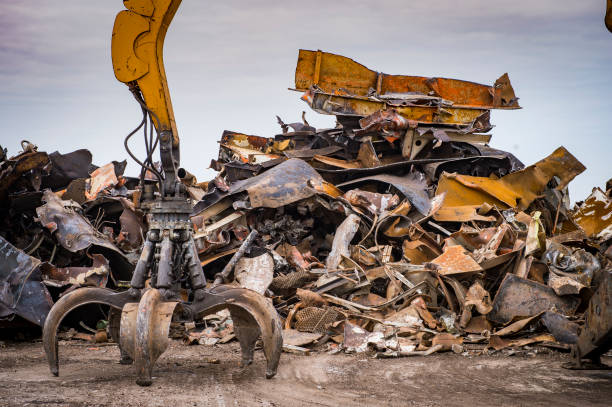Are you ready to get rid of some of the metal recycling Adelaide sitting around your house? Well, we’ve got the perfect guide for you. It’s simple and will help you get the most value for your money—and it’s also fun! Here are all the steps:
Separate your metal.
Metal recycling is about more than just sorting through your scrap. If you don’t separate it, the process will be much less efficient and costlier for you, not to mention that all that extra work would be a waste of time and money!
The first step in separating your metal is using a magnet to pull out any ferrous metals from your pile. The most common types of ferrous metals are iron and steel, but they can also include aluminum or lead when they’re mixed with these metals (in fact, most aluminum cans are made from recycled scrap).
Ferrous metals have been magnetized at some point during the manufacturing process—even if only briefly—and will stick to a magnet like crazy. Non-ferrous metals won’t be affected by magnets at all; they’ll simply fall off because they don’t have any magnetic properties.
Find a recycling center that accepts your metal.
First, find a recycling center that accepts your metal. Some places will pick up the metal for free, while others may charge a small fee to collect your scrap metal; this is often based on the volume or weight of the material being dropped off.
Additionally, some places offer money for scrap metals they take in—you can use this payment to offset costs associated with transporting and processing your materials at their facility!

Do a trial run of what you’re going to do.
Recycling scrap metal is an easy way to make money, but you need to do a trial run before starting. First, estimate how long it will take you to break down all of the materials into their component parts.
Then estimate how much money you can expect from selling each type of scrap metal. You should also consider whether or not there is a market for the materials in question and if so, where that market may be located (there are many online resources for determining this).
You’ll also need to figure out which tools will be needed for your project (this could range anywhere from nothing at all up to some serious power tools). Finally, consider what kind of space you’ll need in order to store your scrap metal and work with it—if necessary, buy or rent a storage unit nearby until the project has been completed.
Organize your metal into manageable piles.
Organize your metal by type. You should separate all your scrap metal into piles that represent the different types of metals you have on hand. For example, you might want to create one pile for aluminum cans, another pile for tin cans, and another pile for steel cans.
If you have large pieces of scrap metal that are difficult to organize at first glance (or if you don’t know how valuable they’ll be), consider sorting them by size first before separating them by type. This will help you determine which pieces are worth more money and which can be tossed aside as junk.
If there is any damage or rust on your scrap metal—either from being exposed in a rainstorm or sitting outside too long—you should rip each piece apart so that it’s easier to recycle because recycling centers often charge less if they’re able to process these materials easily without having to do any work themselves!
Conclusion
I hope I’ve been able to help you get a better understanding of Adelaide hills recycling and what it entails. It’s not hard, but it does take some effort on your part. You have to be patient and willing to learn before going out into the world and doing this yourself.

